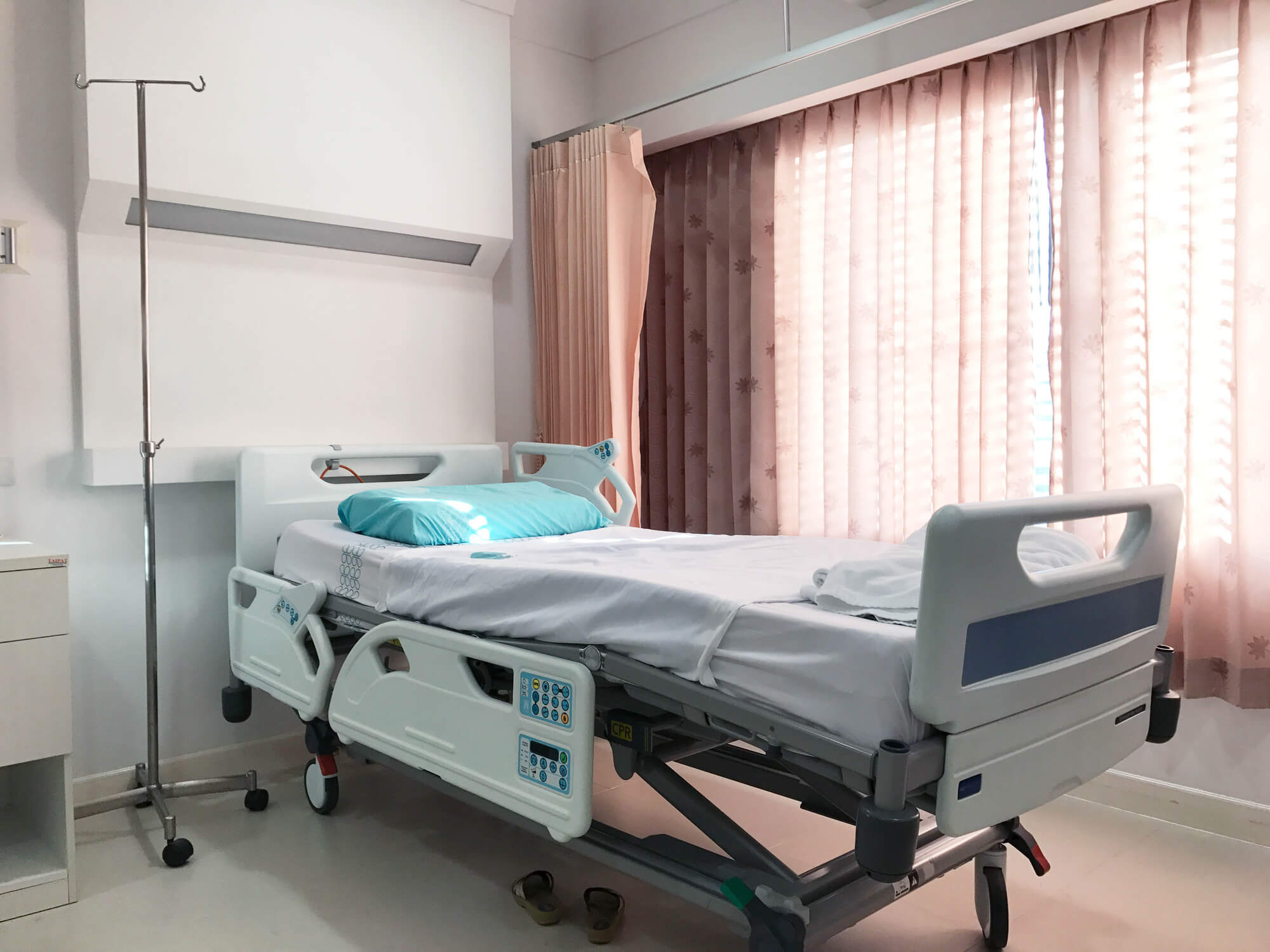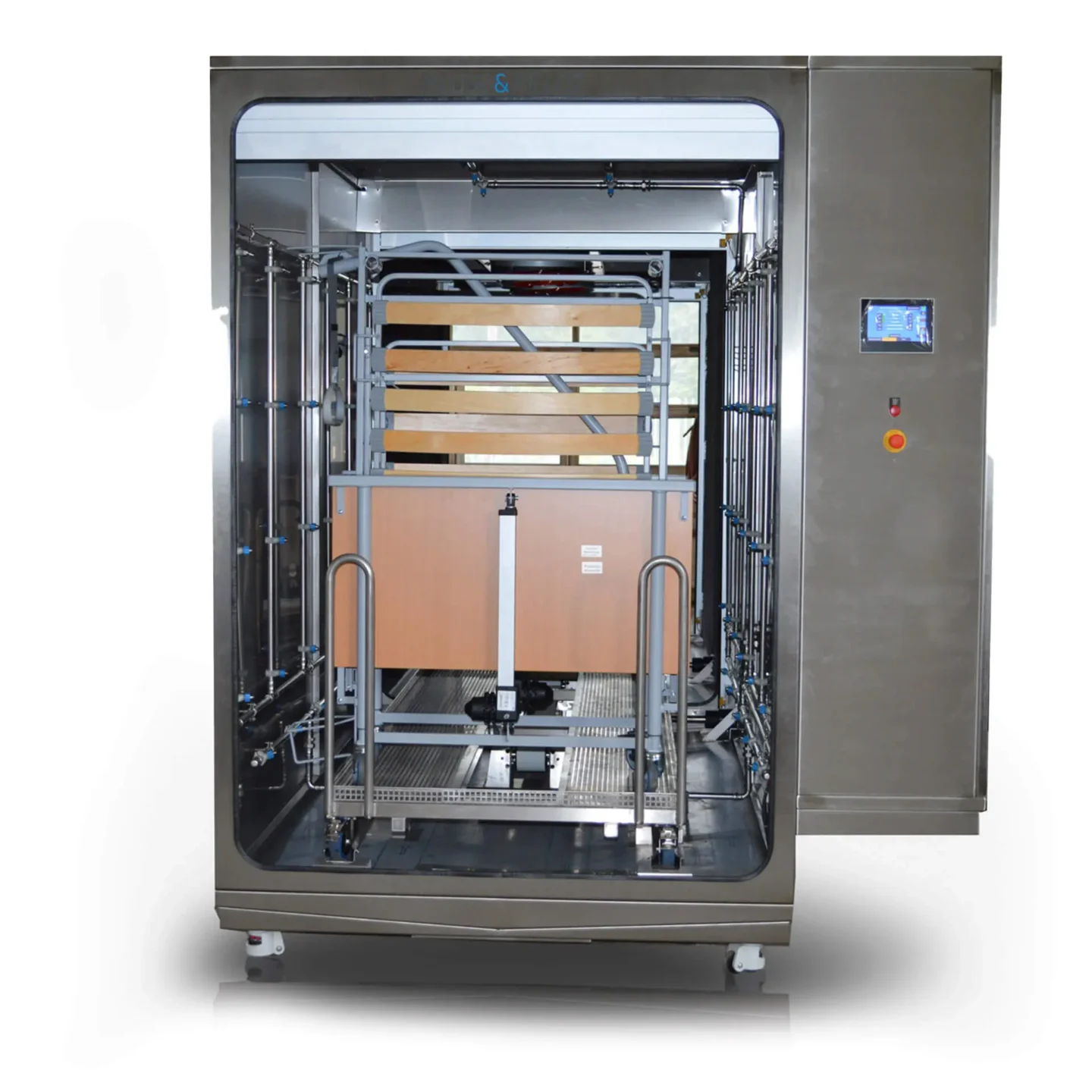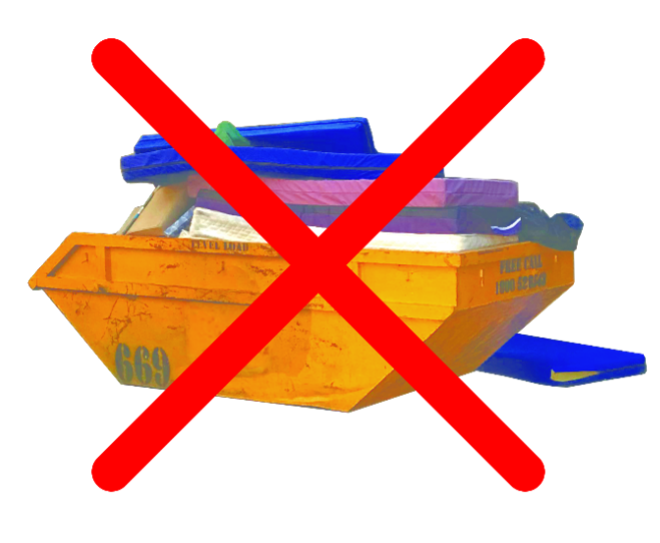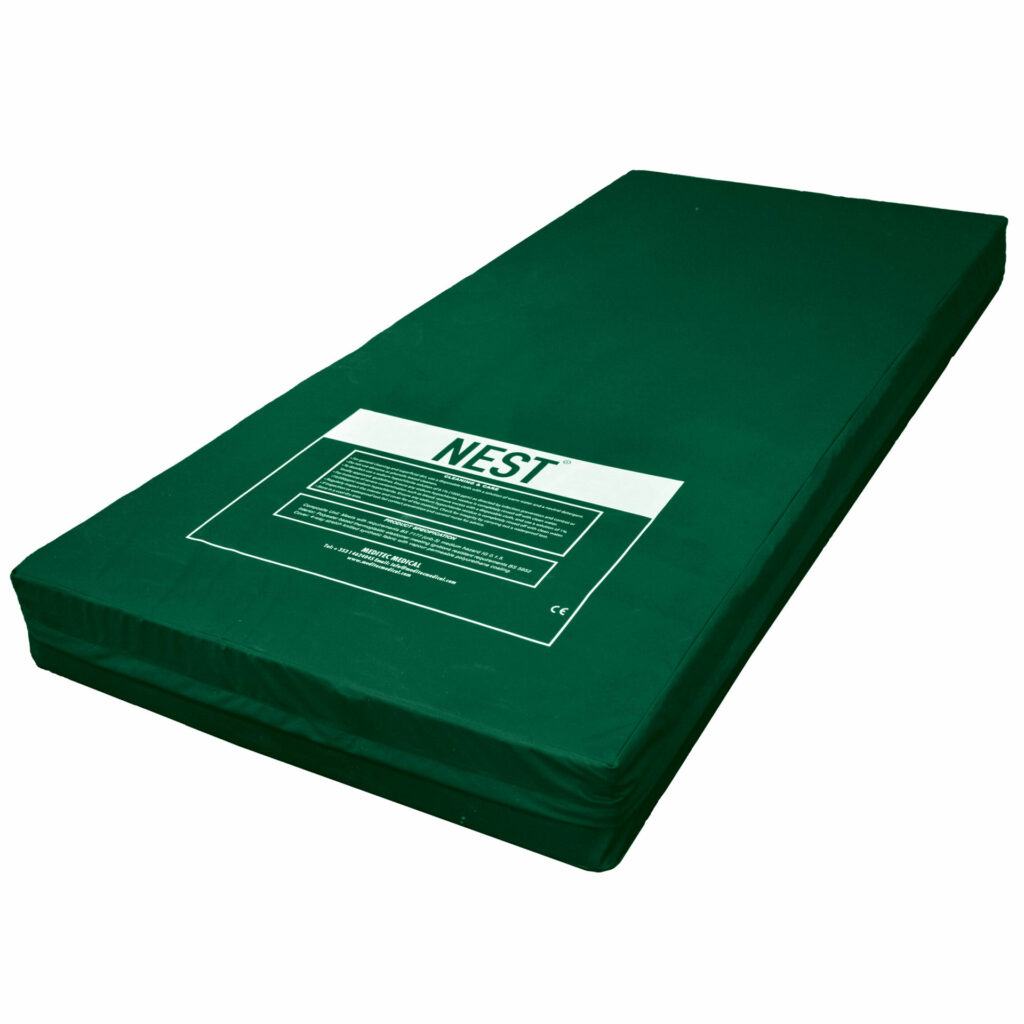Categories
Speciality Areas
Cross infection risk management in pressure care

Some years ago, the MDA (as it was, before it was merged with the MHRA) issued a Medical Device Alert MDA/2010/0021 covering “all types of bed mattresses” to cover the problem that: “If mattress covers are damaged, body or other fluids can pass through and contaminate the inner core. There is the potential for cross- infection if contaminated mattresses remain in use.“
This alert arose because the MDA had received numerous reports of damaged covers and associated interior mattress contamination of the core. Their investigations had revealed that there was a widespread lack of inspection regimes that incorporated frequent checks for external damage or internal contamination.
From a calm surface to… what lies beneath.

Mattress covers can become damaged at any time during use or storage, for example from: needle stick; strike- through; damage from sharp objects; abrasion during handling, transport or movement; or inappropriate cleaning and decontamination procedures. A frequent source of damage to polyurethane (PU) covers is the use of bleach to disinfect covers, since the oxidising actions of the chlorine can quickly compromise the barrier properties of the cover, and where covers aren’t rinsed or dried appropriately this will lead to breakdown in the structure of the PU rendering the cover defective over time.
Once the mattress cover is compromised it no longer forms a barrier and therefore body and other fluids can cross in both directions leading to a risk of cross infection between patients and service users. Even worse: if mattresses with non-removable covers are in use it is impossible to check the level of contamination on the inside.
More recently, concerns have been raised that trolley mattresses were not included in the scope of the MHRA alert and it was unclear whether community beds were included. To this end, NHS National Services Scotland has issued a Safety Action Notice (SAN24022) in July this year to supplement MDA/2010/002, to ensure trolley mattresses are included and to clarify that foam mattresses for community beds are also within scope. This SAN also provides additional risk control measures.
Actions
The actions specified in the original alert notice have been amplified in the Safety Action Notice as follows:
- Review procedures to ensure routine pre-use checks for wear and damage are carried out on hospital bed and trolley mattress covers between patients.
- A system of periodic thorough examinations should be established:
- Thorough examinations of hospital bed and trolley mattresses should be carried out at a suitable frequency based on a risk assessment which takes account of local usage factors.
- It is recommended that community bed mattresses should be thoroughly examined between service users as a minimum and periodically during medium to long term use.
- Thorough examination should include both exterior and interior surfaces:
- Examine the exterior surface for signs of wear and damage such as rippling, holes, cuts, tears and abrasions.
- Examine the internal surface and the mattress core for staining or other signs of contamination by body or other fluids.
- Decontaminate or dispose of mattress covers which show signs of wear and damage that may lead to permeability or which show signs of staining to indicate strikethrough contamination:
- Decontamination of mattress covers should be carried out in accordance with the mattress manufacturer’s instructions for use. In some cases the manufacturer may provide instructions for decontaminating the foam core, in which case the manufacturer’s instructions should be followed.
- Disposal arrangements should follow local agreed processes and national waste policy.
- It is recommended to maintain a stock of replacement mattress covers and foam cores sufficient to ensure that items which fail a pre-use check or thorough examination can be removed from use and replaced without delay.
- Review bed and trolley mattress specifications to ensure they specify removable covers with light- coloured inner surfaces that highlight staining (exceptions may apply, e.g. some theatre trolley/table systems). It is recommended that 2-part covers are specified to allow the top and bottom covers to be replaced independently.
- Consider permanently marking new and replacement mattress cores and covers with the date of first use and a unique identification number for management and audit purposes.”
The original alert also specified: “Arrange for contaminated mattress cores to be either: cleaned and decontaminated in accordance with the manufacturer’s instructions; or safely disposed of“.
Decontamination
Cover materials can be decontaminated relatively easily by processing in an appropriate washing machine – but bear in mind that MDR regulations stipulate that medical devices are to be washed in machines which themselves are designated Class I medical devices. If moving onto disinfection, a wash process is needed first, to remove any gross material contamination that might otherwise be protecting the microbial contaminants from being accessed by the disinfecting agent. (Again, the MDR requires that disinfection of a medical device requires a Class IIa (or higher) classification of the disinfecting agent.)

However, decontaminating the core material of a foam mattress is not so easy. Because of the size of the air pockets in foam it is not physically easy to wash out contaminants, and some viscoelastic (memory) foams should be protected from getting wetted at all. The same principles for decontamination of covers apply to the mattress cores, namely of washing before disinfecting.
Again, mattresses which are designated to be medical devices need to be processed through Class I washers, or Class IIa disinfection processes. Because it is nearly impossible to follow validated decontamination procedures for foam mattresses, these mattresses will largely require disposal.
Disposal
A no-longer usable medical device cannot be randomly consigned to a general waste skip (Figure 3) or disposed of in a domestic bin.

The MHRA guidance on the disposal of medical devices4, states that the devices are to be decontaminated before disposal or transfer to a third party, and supplied with a certificate of decontamination. All items that have been decontaminated must also be identifiable by a label which indicates when it was cleaned and by whom, as it is illegal to transport items by road5 or other routes where there might be a risk of a member of the public coming into contact with a contaminated item, either in transit or at its destination6 .
Foam alternative
Foam is a widely used material for pressure care management in medical cushions and mattresses due to its excellent pressure redistribution properties, but is does have disadvantages due to its weight, patient microclimate management, contamination challenges, and disposal problems.
A recently available alternative is the spun polyester thermoplastic polymers incorporated into NEST® cushions and mattresses (Figure 4)7. While providing equivalent or better pressure care characteristics of many foams, it’s wide open cell structure allows for better microclimate management around a person’s skin. However, if the core does become soiled in any way it can be washed and thermally (or chemically) disinfected in a medically CE marked machine. The material dries almost immediately, and so the mattress can be put back into circulation very quickly, and not be consigned to clinical waste. The NEST polymer has been shown to have inherent antimicrobial properties as well! The lightweight nature means that it is easy for a single person to handle. Finally, at the end of life the core material is fully recyclable, and thus ticks the sustainability box.

References
- MDA/2010/002 All types of bed mattresses – contamination through damaged mattresses or covers
- SAN2402 NHS National Services Scotland Safety Action Notice: Covers for foam mattresses (hospital beds, hospital trolleys and community beds): risk of cross-infection due to wear and damage
- Kluge & Fielitz: https://www.besdecon.net/media/583877/washer-disenfection-leaflet-1.pdf
- MHRA (2021) Managing Medical Devices: Guidance for health and social care organisations
- UK SI2095 (1996) The Carriage of Dangerous Goods by Road Regulations
- TEC Quality (2024) Infection Prevention and Control (In Press)
- NEST: https://www.besrehab.net/find-a-solution/by-brand/nest-cushions-and-mattresses/